Product Overview
Sildenafil / Tadalafil ODT is a pharmacist-compounded, orally disintegrating tablet that combines two phosphodiesterase-5 (PDE5) inhibitors-sildenafil and tadalafil-in a single fast-dissolving dose designed to enhance patient convenience and adherence. By formulating the agents together on a 503A prescription basis, the compounder may tailor therapy for individuals who need both rapid-onset support and sustained vasodilatory activity. Because neither ingredient has been demonstrated to cure erectile dysfunction (ED) or other indications, therapy must always be individualized and initiated only after a complete clinical assessment of cardiovascular status, concomitant medicines, and lifestyle factors. The dual-agent ODT is dispensed solely pursuant to a patient-specific prescription and is not approved by the U.S. Food and Drug Administration; prescribers therefore bear responsibility for counseling on investigational status, expected benefits, and potential risks. Compounded ODTs dissolve on the tongue without water, a feature that may be particularly helpful for patients with dysphagia or those seeking discretion, yet this convenience does not exempt users from the same monitoring required for conventional tablets, including blood pressure checks, evaluation of visual or auditory symptoms, and periodic hepatic and renal laboratory testing.[1]
Sildenafil, first marketed in 1998, provides relatively rapid plasma peak concentrations and a terminal half-life of roughly four hours, whereas tadalafil, approved in 2003, reaches peak levels more slowly but maintains a mean half-life of approximately seventeen and a half hours. When used together at fixed doses of 55 mg sildenafil and 12.5 mg tadalafil, their pharmacokinetic overlap may furnish an early rise in cyclic guanosine monophosphate (cGMP) via sildenafil followed by prolonged PDE5 blockade via tadalafil. Clinicians should remember that greater total PDE5-inhibition exposure could raise the chance of adverse effects such as headache, flushing, and hypotension; consequently, combination therapy should be reserved for patients in whom monotherapy was inadequate or poorly tolerated and only after reversible causes of ED (e.g., medications, endocrine disorders, psychogenic factors) have been addressed.[2]
Each orally disintegrating tablet supplies 55 mg sildenafil and 12.5 mg tadalafil; patients place one tablet on the tongue approximately thirty minutes before anticipated sexual activity, allowing it to dissolve without water. No more than one dose should be taken in twenty-four hours. In individuals older than sixty-five, with moderate renal insufficiency (eGFR < 60 mL/min/1.73 m²) or mild hepatic impairment (Child-Pugh A), clinicians may consider half-strength compounding or alternate-day use. Severe renal (eGFR < 30 mL/min/1.73 m²) or hepatic dysfunction (Child-Pugh B/C) warrants extreme caution or avoidance owing to prolonged exposure and hypotension risk. Food does not meaningfully influence tadalafil absorption, but a high-fat meal can delay sildenafil’s Tmax by nearly an hour; because the ODT bypasses initial gastric disintegration, the meal effect is attenuated yet users should avoid consuming a heavy fatty meal immediately beforehand if rapid onset is desired. Missed doses need not be replaced, given the on-demand schedule. Patients should be reviewed after four to six doses to assess efficacy, blood pressure, and tolerability, with documentation of any adverse events and consideration of alternative therapies if goals are unmet.[12]
Both sildenafil and tadalafil selectively inhibit PDE5, the cGMP-specific isoenzyme that degrades nitric-oxide-stimulated cGMP in cavernous smooth muscle. By slowing cGMP breakdown, the drugs potentiate endogenous nitric oxide signaling generated during sexual stimulation, promoting corpus cavernosum relaxation, arterial inflow, and venous occlusion, which together facilitate penile erection. Although their affinities for PDE5 are comparable, sildenafil shows modest cross-reactivity with PDE6 in retinal photoreceptors-helping to explain transient, blue-tinged vision-while tadalafil exhibits slight activity against PDE11 in skeletal muscle, which may relate to back pain noted in some users.[3]
Tadalafil’s longer elimination half-life provides sustained PDE5 inhibition that can extend for more than twenty-four hours, permitting once-daily or on-demand dosing regimens. Sildenafil’s brisk absorption, conversely, offers a faster onset but a briefer duration; pairing the two theoretically captures the advantages of both pharmacokinetic profiles. European urology guidance cautions, however, that data supporting combination PDE5 therapy remain limited, and clinicians should employ shared decision-making with explicit documentation of informed consent when prescribing a compounded dual product.[4]
The compounded Sildenafil / Tadalafil ODT is contraindicated in any patient who is currently receiving organic nitrates-whether short-acting sublingual glyceryl trinitrate or long-acting transdermal isosorbide dinitrate-because profound, potentially life-threatening hypotension can occur when nitrates and PDE5 inhibitors synergistically augment nitric-oxide signaling. Similar caution applies to nitric-oxide donors such as sodium nitroprusside and recreational inhaled nitrites (“poppers”). Additional absolute contraindications include severe hypersensitivity to either active moiety, hereditary degenerative retinal disorders like retinitis pigmentosa, and recent (≤ two weeks) guanylate cyclase stimulator therapy. Patients with symptomatic hypotension, uncontrolled arrhythmias, or severe aortic stenosis should not initiate treatment until hemodynamic stability is achieved, and prescribers must weigh risks in individuals with active peptic ulcer disease or bleeding diathesis, given observed PDE5-associated platelet-inhibition effects.[5]
Cardiologists emphasize that sexual activity itself imposes an incremental cardiac load; therefore, men in the highest Princeton IV risk class-involving unstable angina, uncontrolled hypertension, or recent myocardial infarction-should undergo thorough evaluation and stabilization before any PDE5 inhibitor is considered. Although observational registries report a low incidence of serious cardiovascular events directly attributable to PDE5 inhibitors, sudden cardiac death has been documented rarely, typically in individuals with unrecognized coronary disease. In this context, baseline exercise tolerance testing may be prudent for sedentary patients over forty with multiple risk factors, and emergent medical attention is warranted if chest pain, syncope, or persistent palpitations occur during coitus following ODT administration.[6]
Cytochrome P450 3A4 (CYP3A4) metabolizes both sildenafil and tadalafil extensively; hence, potent inhibitors such as ketoconazole, itraconazole, ritonavir, or clarithromycin can elevate plasma concentrations two- to four-fold, necessitating cautious dose reduction or staggered administration. Conversely, strong inducers like rifampin or carbamazepine may diminish clinical efficacy. Co-administration with alpha-adrenergic antagonists (e.g., tamsulosin or doxazosin) may precipitate additive vasodilation and orthostatic dizziness; if combination therapy is unavoidable, the alpha-blocker should be stabilized first, followed by initiation of the ODT at the lowest feasible dose under blood-pressure monitoring. Additional interactions of note include delayed gastric emptying agents, since rapid dissolving occurs buccally but systemic absorption still relies on swallowing of dissolved residues, and the theoretical amplification of ocular adverse events when combined with prostaglandin analog eye drops.[7]
Grapefruit and Seville orange juices inhibit intestinal CYP3A4 and organic anion-transporting polypeptide 1A2 (OATP1A2), potentially doubling bioavailability of sildenafil and tadalafil; patients should be counseled to avoid large quantities of these juices within twenty-four hours of dosing to limit exaggerated hypotension or visual side effects. Heavy alcohol intake may further lower systemic vascular resistance, compounding orthostatic symptoms; accordingly, men should restrict ethanol consumption to modest social amounts on treatment days. Although many antihypertensives are safely co-administered, additive blood-pressure reductions can occur with amlodipine, and clinicians should consider evening rather than morning dosing schedules to minimize daytime dizziness.[8]
The majority of adverse reactions are mild-to-moderate and transient. In clinical experience with single-agent PDE5 inhibitors, headache (up to 16 %), flushing (up to 12 %), nasal congestion (11 %), dyspepsia (9 %), and visual color tinge (3 %) are most common; pharmacodynamic class effects account for the vasodilatory symptoms, whereas transient PDE6 inhibition explains blue-hued vision. Combination therapy may increase frequency owing to higher cumulative exposure, though titration to the present 55 mg / 12.5 mg ratio seeks to balance efficacy and tolerability. Patients should be reassured that most symptoms wane within four hours; nevertheless, persistent or severe reactions merit dose adjustment or discontinuation. Back pain and myalgia, postulated to arise from PDE11 engagement, are more characteristic of tadalafil yet could manifest in dual-agent use; non-steroidal anti-inflammatory drugs and hydration typically suffice for relief.[9]
Rare but clinically significant events include non-arteritic anterior ischemic optic neuropathy (NAION), sudden sensorineural hearing loss, and priapism exceeding four hours. Although causal relationships remain debated, prescribers should instruct patients to seek urgent care for abrupt vision or hearing changes or for erections persisting beyond 240 minutes to avert permanent tissue damage. Long-term safety data extending beyond three years are limited; however, meta-analyses of daily tadalafil or as-needed sildenafil suggest no increase in serious cardiovascular or renal events compared with placebo. Given the novelty of the compounded dual formulation, clinicians should document any unexpected reactions in pharmacovigilance portals and encourage patients to report new symptoms promptly.[10]
Neither sildenafil nor tadalafil is approved for obstetric use, yet both have been studied experimentally for fetal growth restriction and pre-eclampsia because enhanced uteroplacental perfusion could ameliorate compromised pregnancies. Evidence remains inconclusive: some randomized trials report increased birth weight and prolonged gestation, while others show no neonatal benefit and raise concern for stillbirth risk. Consequently, compounded Sildenafil / Tadalafil ODT should not be used during pregnancy unless potential maternal benefits clearly outweigh fetal risks and after consultation with maternal-fetal medicine specialists. Animal studies reveal no teratogenicity at doses up to thirty times human exposure, but transplacental passage does occur, and long-term neurodevelopmental outcomes are unknown. Women of reproductive potential should employ reliable contraception during therapy and for at least a week after the last dose, reflecting tadalafil’s longer half-life. Because breastfeeding data are lacking and PDE5 distribution into milk has not been characterized, nursing mothers should refrain from this compounded product or interrupt lactation until drug clearance is assured.[11]
Proper storage is essential to maintain potency and orodispersibility. Stability studies of rapid-dissolving sildenafil-based tablets demonstrate that, when compounded under Class III laminar airflow hoods and packaged in low-moisture blister strips with desiccant, potency remains within 95-105 % of label for at least 180 days at 25 °C/60 % RH. Because tadalafil is similarly stable but hygroscopic, pharmacies should include silica gel packets and advise patients to keep tablets in the original foil until use, away from bathrooms or kitchens where humidity spikes. Freezing is discouraged as recrystallization may alter dissolution. Visual inspection for discoloration or cracking before administration is prudent; compromised units should be discarded and the dispensing pharmacist notified. Beyond-use dating follows USP <795> guidelines for nonaqueous formulations-up to 180 days or sooner if any component’s official monograph specifies a shorter period. Patients should store medication out of reach of children and pets, given reports of accidental ingestion leading to alarming hypotension in toddlers and small animals.[13]
- U.S. Food and Drug Administration. (2014). Viagra (sildenafil citrate) tablets [prescribing information]. https://www.accessdata.fda.gov/drugsatfda_docs/label/2014/20895s039s042lbl.pdf
- U.S. Food and Drug Administration. (2011). Cialis (tadalafil) tablets [prescribing information]. https://www.accessdata.fda.gov/drugsatfda_docs/label/2011/021368s20s21lbl.pdf
- Kloner, R. A., & Jarow, J. P. (2003). Cardiovascular safety of sildenafil. American Journal of Cardiology, 91(12), 80F-87F. https://pubmed.ncbi.nlm.nih.gov/12735784/
- Salonia, A., et al. (2025). European Association of Urology guidelines on male sexual and reproductive health: Erectile dysfunction. European Urology, 88(1), 76-102. https://pubmed.ncbi.nlm.nih.gov/40340108/
- U.S. Food and Drug Administration. (2023). Revatio (sildenafil) label. https://www.accessdata.fda.gov/drugsatfda_docs/label/2023/021845s025lbl.pdf
- Khera, M., et al. (2024). Princeton IV consensus: PDE5 inhibitors and cardiac health. Journal of Sexual Medicine, 21(2), 90-102. https://academic.oup.com/jsm/article/21/2/90/7499332
- Backman, J. T., et al. (2000). Pharmacokinetic-pharmacodynamic consequences of CYP3A4 inhibition. Clinical Pharmacokinetics, 38(1), 41-57. https://pubmed.ncbi.nlm.nih.gov/10668858/
- Health.com. (2025). How grapefruit can affect your medications. https://www.health.com/how-grapefruit-can-affect-your-medications-8744002
- StatPearls Publishing. (2024). Sildenafil. https://www.ncbi.nlm.nih.gov/books/NBK558978/
- Jiang, T., et al. (2021). Combination therapies for erectile dysfunction: Safety profile. JAMA Network Open, 4(2), e2038689. https://jamanetwork.com/journals/jamanetworkopen/fullarticle/2776545
- Abbasalizadeh, F., et al. (2023). Effects of sildenafil on intrauterine growth restriction: A systematic review. Journal of Obstetrics and Gynaecology Research, 49(5), 1432-1440. https://pmc.ncbi.nlm.nih.gov/articles/PMC10236759/
- Forgue, S. T., et al. (2006). Tadalafil pharmacokinetics in healthy subjects. Clinical Pharmacology & Therapeutics, 79(1), 55-67. https://pmc.ncbi.nlm.nih.gov/articles/PMC1885023/
- Liew, K. B., et al. (2021). Physical and chemical stability of sildenafil rapid-dissolving tablets. International Journal of Pharmaceutical Compounding, 25(4), 334-342. https://pubmed.ncbi.nlm.nih.gov/33503013/
- Porst, H., et al. (2011). Onset of efficacy of tadalafil once daily. Journal of Urology, 186(2), 479-485. https://www.sciencedirect.com/science/article/abs/pii/S0022534710045714
- Zhou, Z., et al. (2019). Long-term tadalafil daily versus on-demand: Meta-analysis. Sexual Medicine, 7(3), 282-291. https://pubmed.ncbi.nlm.nih.gov/31307951/
- Muirhead, G. J., et al. (2002). Effects of renal impairment on sildenafil pharmacokinetics. British Journal of Clinical Pharmacology, 53(1), 61-70. https://pubmed.ncbi.nlm.nih.gov/11879256/
- Wrishko, R., et al. (2008). Effects of hepatic impairment on tadalafil exposure. British Journal of Clinical Pharmacology, 65(4), 557-565. https://pmc.ncbi.nlm.nih.gov/articles/PMC2000708/
- Ilic, K., et al. (2004). Sildenafil pharmacokinetics during hemodialysis. Kidney International, 66(2), 628-634. https://pubmed.ncbi.nlm.nih.gov/15200445/
- Chen, H., et al. (2021). Meta-analysis of tadalafil long-term efficacy and tolerance. Journal of Sexual Medicine, 18(4), 640-650. https://pubmed.ncbi.nlm.nih.gov/31307951/
- Rahman, A., et al. (2025). Sildenafil and reduced risk of Alzheimer disease: Systematic review. BMC Neurology, 25(1), 112. https://pmc.ncbi.nlm.nih.gov/articles/PMC11984433/
- Nguyen, T. P., et al. (2023). Exploring the multifaceted potential of sildenafil. Medicines, 10(12), 2190. https://www.mdpi.com/1648-9144/59/12/2190
- Galie, N., et al. (2005). Sildenafil citrate therapy for pulmonary arterial hypertension. New England Journal of Medicine, 353(20), 2148-2157. https://www.nejm.org/doi/full/10.1056/NEJMoa050010
- Owen, S. C., et al. (2016). Physicochemical and microbiological stability of compounded sildenafil suspensions. Canadian Journal of Hospital Pharmacy, 69(1), 24-30. https://pmc.ncbi.nlm.nih.gov/articles/PMC4727739/
How quickly does Sildenafil / Tadalafil ODT start working?
Onset may be as soon as fifteen minutes for some users thanks to sildenafil’s rapid absorption, while tadalafil contributes to sustained responsiveness for up to thirty-six hours.[14]
Why combine two PDE5 inhibitors instead of increasing one agent’s dose?
Combination allows lower individual doses, which may lessen dose-dependent adverse effects while offering complementary pharmacokinetics for patients who failed monotherapy.[15]
Can men with chronic kidney disease use this ODT?
Yes, but reduced starting frequency is advisable because sildenafil exposure doubles when eGFR falls below 30 mL/min/1.73 m², and accumulated drug may intensify hypotension.[16]
Is the product safe in moderate liver disease?
Use cautiously; tadalafil clearance declines with hepatic impairment, so dose spacing or alternative therapy may be preferable in Child-Pugh B and is not recommended in Child-Pugh C.[17]
Does dialysis remove sildenafil or tadalafil?
Hemodialysis does not meaningfully clear sildenafil, and data for tadalafil suggest similarly negligible removal; dose timing around dialysis sessions offers no benefit.[18]
What is known about long-term use?
Meta-analyses of daily tadalafil regimens over twenty-four weeks or longer show durable efficacy and tolerability, indicating that chronic PDE5 inhibition is generally safe under medical supervision.[19]
Could using sildenafil or tadalafil reduce dementia risk?
Emerging observational data link chronic sildenafil exposure to lower Alzheimer disease incidence, but causality remains unproven and randomized trials are needed. [20]
Do PDE5 inhibitors help conditions beyond ED?
Research explores benefits in pulmonary hypertension, altitude sickness, and certain heart-failure phenotypes, reflecting broader vasodilatory and anti-fibrotic effects. [21]
Is this ODT appropriate for pulmonary arterial hypertension?
No; pulmonary hypertension treatment requires specific dosing regimens (e.g., 20 mg sildenafil three times daily) validated in randomized trials, not the ED-targeted combination used here.[22]
How long can compounded tablets be stored at home?
Data on extemporaneously prepared sildenafil suspensions suggest chemical stability for at least ninety days; under similar moisture-controlled conditions, ODTs retain potency for up to six months.[23]
Disclaimer: This compounded medication is prepared under section 503A of the U.S. Federal Food, Drug, and Cosmetic Act. Safety and efficacy for this formulation have not been evaluated by the FDA. Therapy should be initiated and monitored only by qualified healthcare professionals.
Administration Instructions
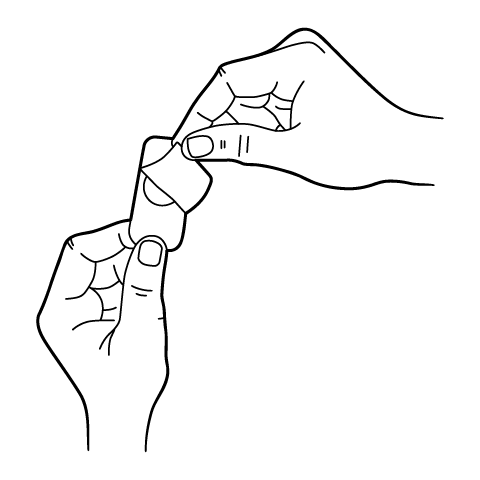
ODT and Troches Instructions
Related medications
503A vs 503B
- 503A pharmacies compound products for specific patients whose prescriptions are sent by their healthcare provider.
- 503B outsourcing facilities compound products on a larger scale (bulk amounts) for healthcare providers to have on hand and administer to patients in their offices.
Frequently asked questions
Our team of experts has the answers you're looking for.
A clinical pharmacist cannot recommend a specific doctor. Because we are licensed in all 50 states*, we can accept prescriptions from many licensed prescribers if the prescription is written within their scope of practice and with a valid patient-practitioner relationship.
*Licensing is subject to change.
Each injectable IV product will have the osmolarity listed on the label located on the vial.

Given the vastness and uniqueness of individualized compounded formulations, it is impossible to list every potential compound we offer. To inquire if we currently carry or can compound your prescription, please fill out the form located on our Contact page or call us at (877) 562-8577.
We source all our medications and active pharmaceutical ingredients from FDA-registered suppliers and manufacturers.

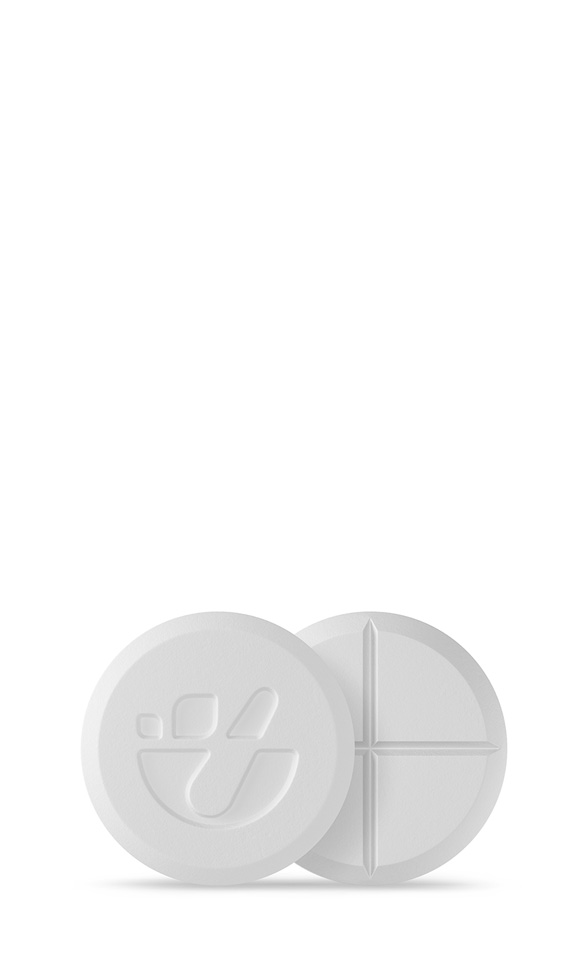
 Tadalafil Troches
Tadalafil Troches Tadalafil / Tramadol HCl Troches
Tadalafil / Tramadol HCl Troches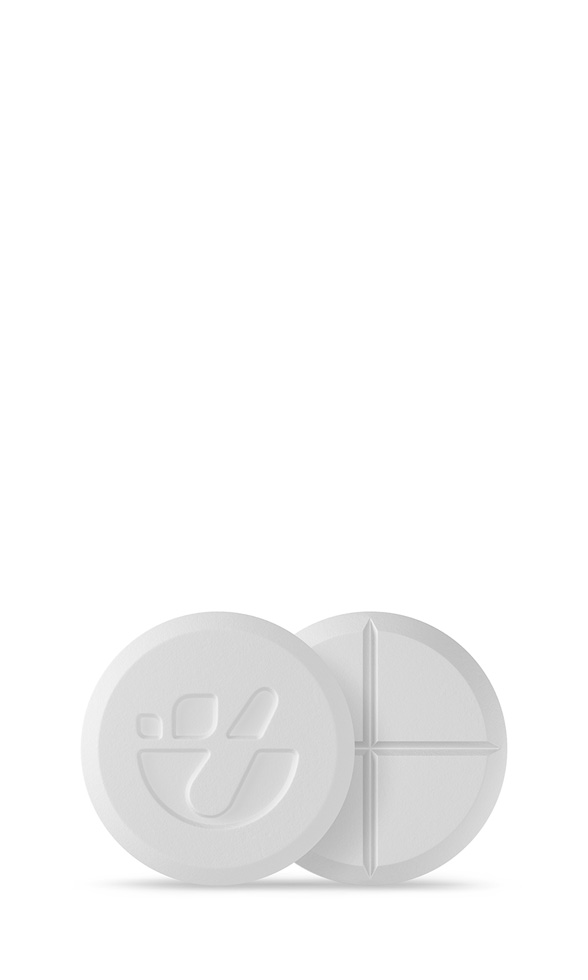 Tadalafil / Oxytocin ODT
Tadalafil / Oxytocin ODT Tadalafil / Apomorphine HCl Troches
Tadalafil / Apomorphine HCl Troches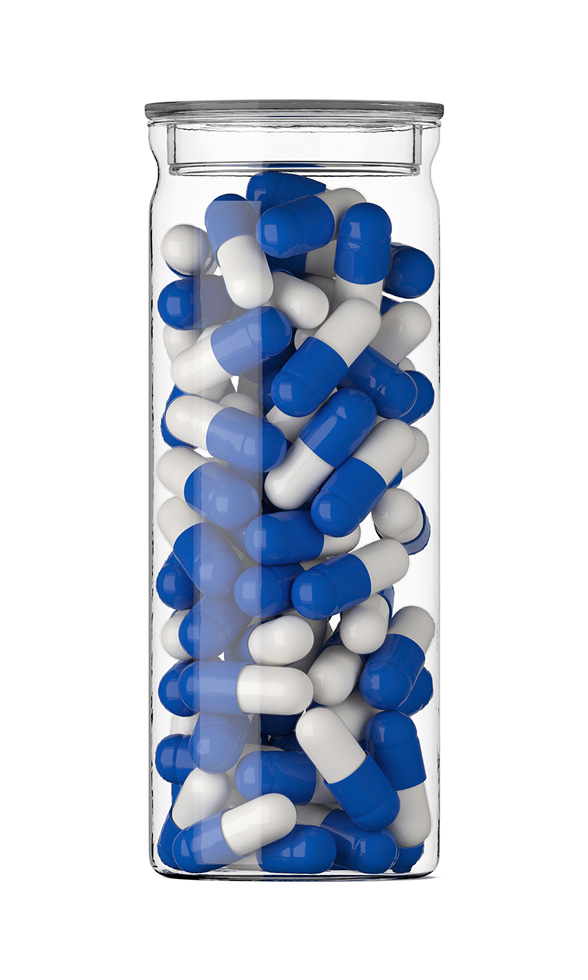 Enclomiphene Citrate Capsules
Enclomiphene Citrate Capsules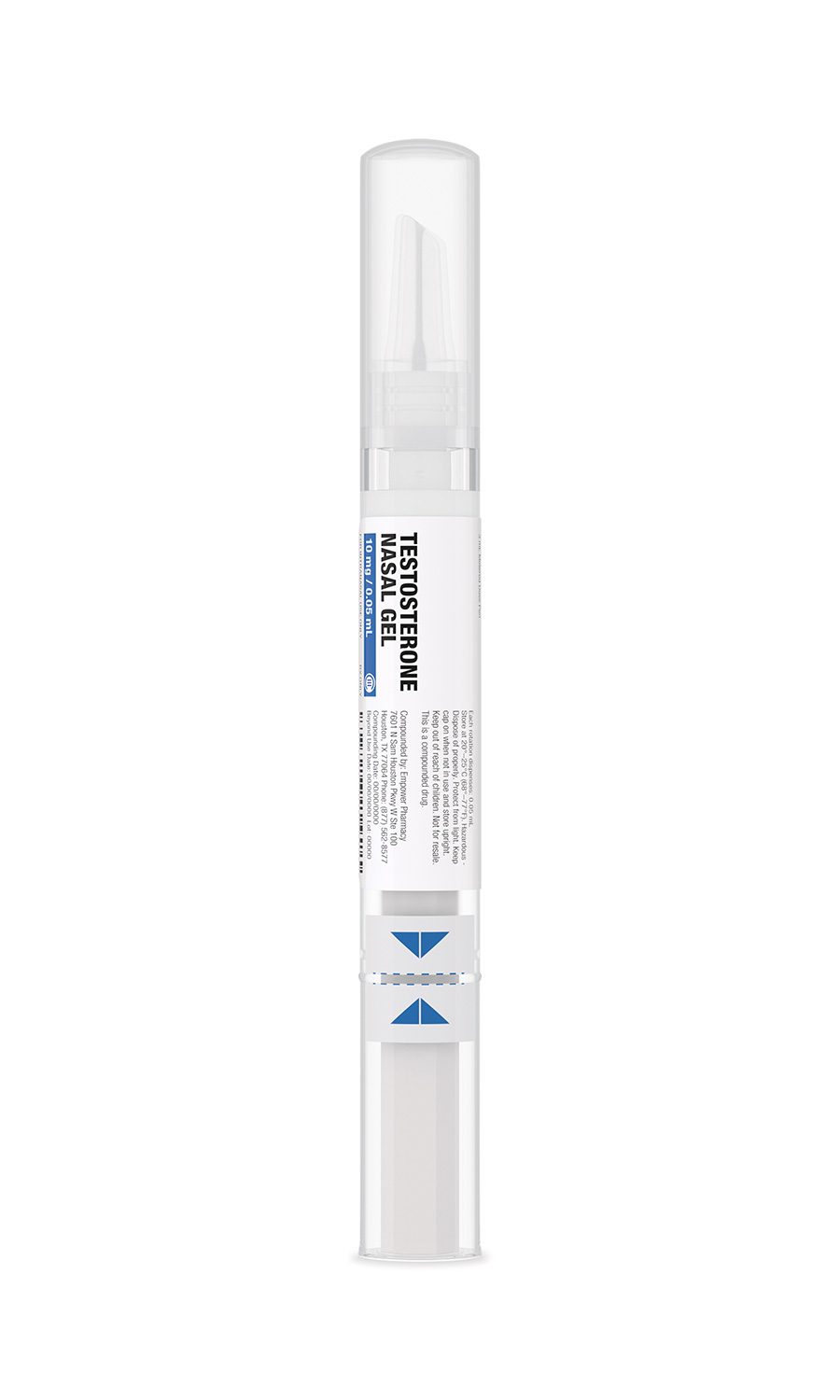 Testosterone Nasal Gel
Testosterone Nasal Gel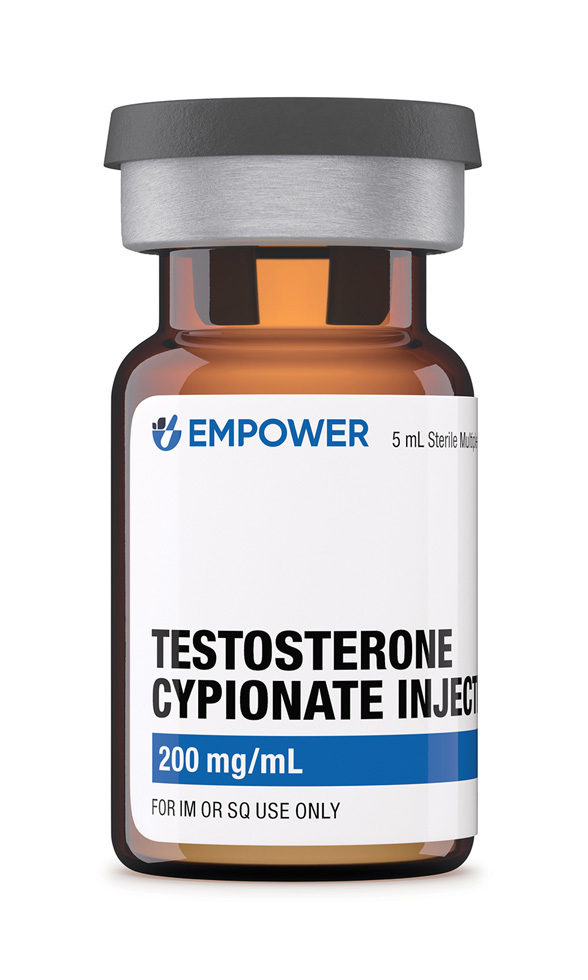 Testosterone Cypionate Injection
Testosterone Cypionate Injection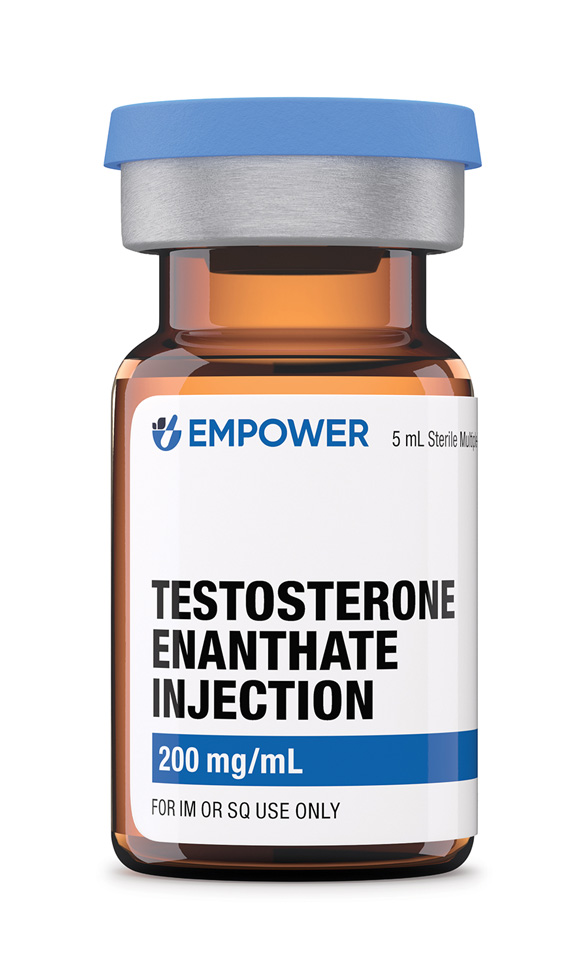 Testosterone Enanthate Injection
Testosterone Enanthate Injection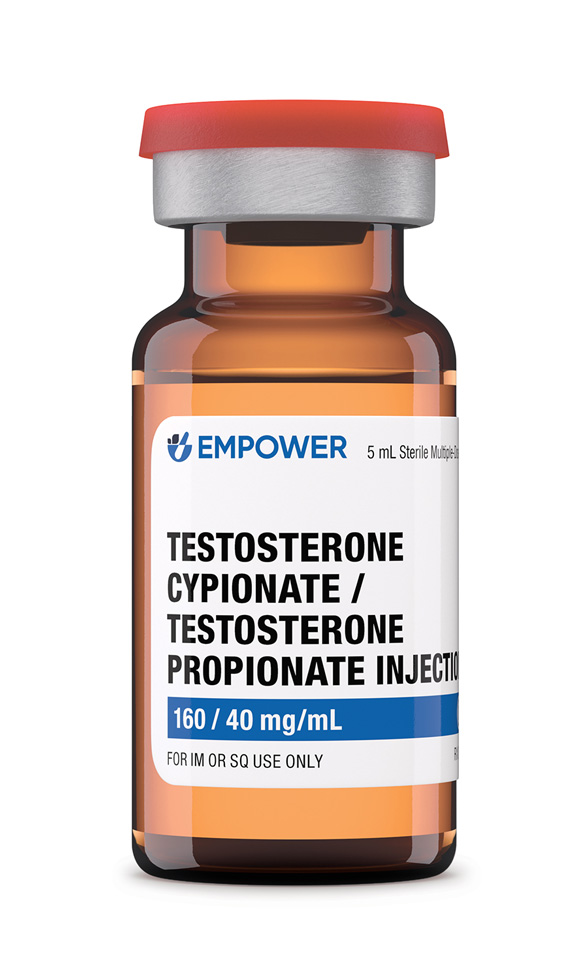 Testosterone Cypionate / Testosterone Propionate Injection
Testosterone Cypionate / Testosterone Propionate Injection